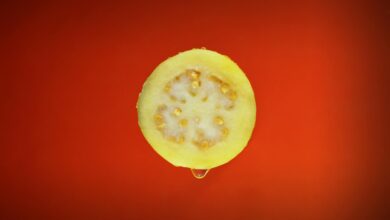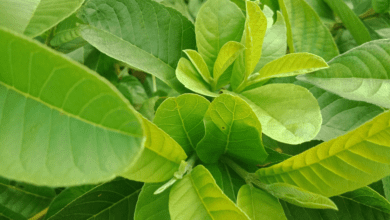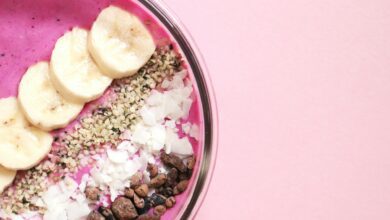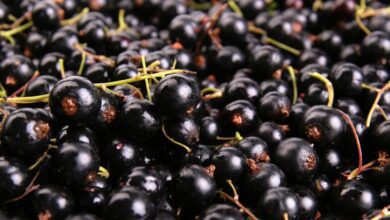The Sweet Side of Wellness: Uncovering the Surprising Benefits of Licorice
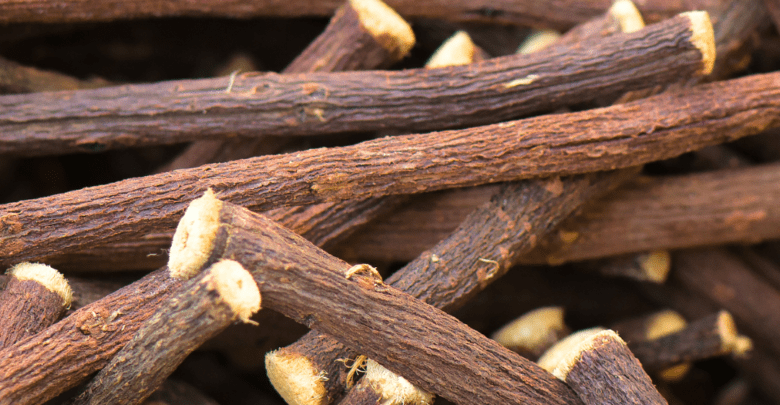
Licorice, known for its distinct sweet flavor and unique medicinal properties, has been used for centuries in various cultures for its wide range of benefits. From its nutritional value to its role in traditional medicine and skincare, licorice offers a treasure trove of surprising advantages that are often overlooked. In this comprehensive guide, we will delve into the multifaceted benefits of licorice, shedding light on its nutritional, medicinal, and cosmetic uses, as well as potential side effects and precautions. By the end of this article, you’ll gain a newfound appreciation for licorice and its sweet side of wellness.
Nutritional Benefits of Licorice
Licorice root, derived from the Glycyrrhiza glabra plant, is a rich source of nutrients that contribute to its myriad of health benefits. This versatile herb contains an array of essential vitamins and minerals, including vitamin E, B-complex vitamins, potassium, phosphorus, and magnesium. Furthermore, licorice root is renowned for its high levels of flavonoids and phytoestrogens, which possess potent antioxidant properties. These compounds play a pivotal role in combating oxidative stress, reducing inflammation, and supporting overall well-being.
Beyond its micronutrient content, licorice root is prized for its glycyrrhizin content, a natural sweetener that is roughly 50 times sweeter than sucrose. This aspect makes licorice an appealing alternative to refined sugars, offering a natural way to enhance the flavor of various foods and beverages. Moreover, the presence of glycyrrhizin contributes to licorice’s potential to regulate blood sugar levels, making it a favorable option for individuals seeking healthier sweetening alternatives.
In addition to its nutritional profile, licorice root contains an abundance of fiber, which aids in digestion and promotes gut health. The combination of these nutritional components makes licorice a valuable addition to a balanced diet, providing both flavor and functional benefits that support overall wellness.
Medicinal Properties and Health Benefits of Licorice
The medicinal properties of licorice have been recognized and utilized for centuries in traditional medicine systems across the globe. One of the key bioactive compounds in licorice is glycyrrhizin, which exhibits anti-inflammatory, antimicrobial, and immunomodulatory effects. These properties make licorice a valuable ally in combating various health issues and promoting holistic well-being.
Licorice’s anti-inflammatory properties have been harnessed to alleviate symptoms associated with conditions such as arthritis, asthma, and other inflammatory disorders. Its ability to modulate the immune response has also been studied for its potential in supporting immune function and combating infections. Furthermore, licorice is known for its expectorant and demulcent actions, making it a popular remedy for respiratory ailments, including coughs, colds, and sore throats.
Another notable health benefit of licorice is its role in promoting gastrointestinal health. The presence of glycyrrhizin and flavonoids in licorice root contributes to its gastroprotective and antiulcer properties. These components aid in soothing the digestive tract, reducing gastric inflammation, and protecting the mucosal lining of the stomach and intestines. As a result, licorice is often incorporated into natural remedies for digestive issues, such as acid reflux, indigestion, and gastritis.
Also read: Uncover the Juicy Secrets: 7 Surprising Benefits of Watermelon You Need to Know!
Licorice in Traditional Medicine
The use of licorice in traditional medicine systems dates back to ancient civilizations, where it was revered for its therapeutic properties and diverse applications. In Ayurveda, the traditional medicine of India, licorice, known as “Yashtimadhu,” is considered a potent herb with rejuvenating and balancing effects on the body. It is utilized in formulations to pacify the Vata and Pitta doshas, promoting overall harmony and vitality.
Similarly, in Traditional Chinese Medicine (TCM), licorice, referred to as “Gan Cao,” holds a revered position as a harmonizing herb that enhances the synergistic effects of other medicinal ingredients. It is often combined with other herbs to regulate the flow of Qi, nourish the Spleen and Stomach, and alleviate spasms and cramps. The adaptogenic qualities of licorice make it a valuable component in TCM formulations aimed at restoring balance and addressing a wide spectrum of health concerns.
The traditional use of licorice in these ancient healing systems underscores its enduring reputation as a versatile botanical with profound therapeutic implications. Its integration into traditional medicine reflects the profound respect and understanding of its nuanced effects on the human body, further emphasizing its significance in promoting holistic wellness.
Potential Side Effects and Precautions of Licorice Consumption

While licorice offers a myriad of benefits, it is essential to be mindful of potential side effects and precautions associated with its consumption. The primary concern regarding licorice consumption is its glycyrrhizin content, which, when consumed in excessive amounts, can lead to adverse effects, particularly on cardiovascular and renal health.
Excessive intake of glycyrrhizin has been linked to hypertension, hypokalemia, and fluid retention, posing risks for individuals with pre-existing cardiovascular conditions. Furthermore, prolonged and high-dose consumption of licorice can impact renal function, leading to potassium depletion and potential renal damage. It is crucial for individuals with hypertension, heart disease, or impaired kidney function to exercise caution and moderate their licorice intake to avoid these potential complications.
Additionally, certain populations, such as pregnant women, nursing mothers, and individuals with specific medical conditions or medication regimens, should consult with healthcare professionals before incorporating licorice into their diet or healthcare routines. By being aware of these potential side effects and precautions, individuals can make informed decisions regarding the appropriate use of licorice to harness its benefits while minimizing associated risks.
Also read: Mighty Mangoes: The Incredible Health Benefits of Mangoes!
Licorice in Skincare and Beauty Products
The benefits of licorice extend beyond internal consumption, as it has also found a significant place in the realm of skincare and beauty products. Licorice extract, derived from the root of the Glycyrrhiza glabra plant, is prized for its skin-soothing, brightening, and anti-inflammatory properties, making it a popular ingredient in a wide variety of cosmetic formulations.
One of the key skincare benefits of licorice extract is its ability to address hyperpigmentation and uneven skin tone. The presence of glabridin, a potent antioxidant and skin-lightening agent in licorice, contributes to its efficacy in reducing the appearance of dark spots and discoloration. This makes licorice extract a valuable inclusion in products designed to promote a more uniform and radiant complexion.
Furthermore, licorice extract exhibits anti-inflammatory and anti-irritant properties, making it suitable for soothing sensitive and reactive skin. It helps calm redness, reduce skin sensitivity, and alleviate discomfort, making it a sought-after ingredient in products tailored for individuals with sensitive or compromised skin.
The antioxidant properties of licorice extract also contribute to its anti-aging benefits, as it aids in combating free radical damage and oxidative stress, which are key contributors to premature aging. By incorporating licorice extract into skincare routines, individuals can benefit from its protective and rejuvenating effects, supporting the maintenance of youthful and healthy-looking skin.
Culinary Uses of Licorice

Beyond its medicinal and cosmetic applications, licorice also holds a unique place in the culinary world, where its distinct flavor and natural sweetness add depth and complexity to a variety of dishes and beverages. Licorice root, whether used in its natural form or as an extract, can be employed in both sweet and savory culinary creations, offering a delightful twist to traditional recipes.
In confectionery, licorice is celebrated for its role in the production of licorice candy, a beloved treat known for its rich, sweet flavor and chewy texture. The unique taste of licorice lends itself to an array of confections, including licorice twists, candies, and pastilles, providing a satisfying indulgence for those with a penchant for its distinct taste.
Moreover, licorice root can be utilized in savory cooking to impart a subtle sweetness and depth of flavor to dishes. It can be incorporated into marinades, sauces, and braises, adding a nuanced sweetness that complements a wide range of ingredients, from meats to vegetables. Additionally, licorice-infused beverages, such as teas and cocktails, offer an aromatic and flavorful experience, showcasing the versatility of licorice in the realm of culinary arts.
By embracing licorice as a culinary ingredient, individuals can explore its unique flavor profile and discover innovative ways to infuse their culinary creations with its sweet and aromatic essence.
Conclusion and Final Thoughts
In conclusion, the multifaceted benefits of licorice, ranging from its nutritional value and medicinal properties to its applications in traditional medicine, skincare, and culinary arts, underscore its remarkable versatility and significance in promoting holistic wellness. However, it is crucial to approach the consumption of licorice with mindfulness and awareness of potential side effects, particularly related to its glycyrrhizin content.
By integrating licorice into various facets of life, individuals can harness its sweet side of wellness, reaping the rewards of its enriching properties while savoring its distinct flavor and aroma. Whether enjoyed in a soothing cup of licorice tea, incorporated into skincare rituals, or used to elevate culinary creations, licorice stands as a testament to the profound connection between nature’s offerings and our well-being.
In embracing the surprising benefits of licorice, we embark on a journey of discovery and appreciation for an ancient botanical ally that continues to enchant and enrich our lives in myriad ways.
Explore the diverse benefits of licorice and incorporate its sweet side of wellness into your daily routine. Whether in the form of nutritional supplements, skincare products, or culinary delights, let licorice enhance your journey towards holistic well-being.
More on Planet Goodwill
The Amazing Benefits of Asparagus
The Surprising Health Benefits of Kiwi: A Nutrient Powerhouse

